Hello, beautiful souls!
This month on The Six-Yard Saga, we journey to the golden heart of Maharashtra — the land of Vidarbha, where silk and soil breathe together. Here, the famed Tussar sarees are not just woven — they’re born from rhythm, patience, and memory.
In this land where rust-red soil meets golden sun, the Vidarbha Tussar takes form — the threads, drawn from wild cocoons, shimmer with the glow of morning light.
Each karvati border — named after the karvat or “saw-tooth” pattern — tells of the artisan’s rhythm, their loom beating in time with life itself. The sharp, geometric borders contrast the calm expanse of tussar, creating a dialogue of precision and grace.
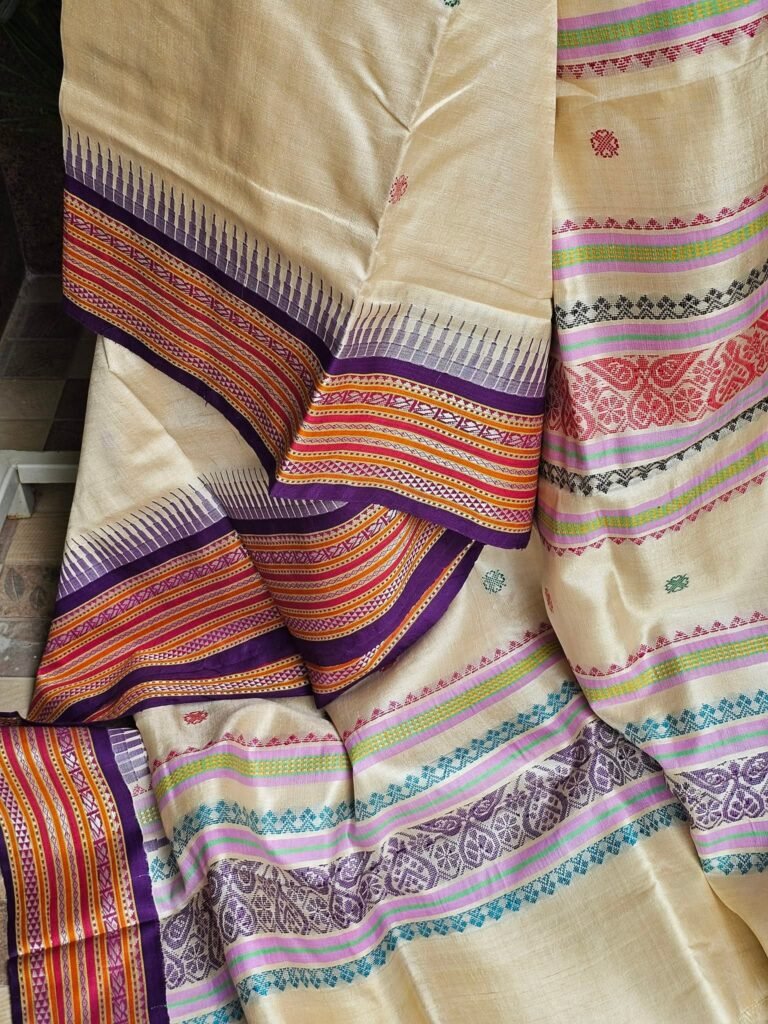
To drape a Vidarbha Tussar is to feel a movement of heritage — the light crackle of silk against skin, the way it falls with quiet dignity. It is elegance rooted in earth, a blend of tradition and strength, just like the women who wear it.
Weave Specs
- Region: Vidarbha, Maharashtra
- Material: 100% natural Desi Tussar Silk with Mercerized Cotton Border
- Technique: Three-Shuttle Handloom weaving
- Time to Weave: 10-15 days
- Recognition: GI Tag (2017)
- Price Range: ₹11000 and above
- Best For: Occasions, heirloom wear, understated luxury
The Weave & Its Roots
In the heart of Maharashtra, between the cotton fields and the silk villages of Bhandara, Chandrapur, and Wardha, lives a centuries-old tradition — the Vidarbha Tussar. Known locally as Karvati Paithani or Karvati Tussar, this handloom silk has a distinctive identity.
The word “Karvat” in Marathi means “saw,” and the saree earns its name from the signature saw-tooth border pattern that runs along its edges. It’s not just a design — it’s a rhythm, a heartbeat of the loom.
Each saree is woven from Desi Tussar silk, prized for its natural golden sheen and textured body. The warp and weft come alive through a three-shuttle weaving technique, which interlaces silk and mercerized cotton threads — a rare practice that gives this saree both grace and strength.
Design Language: The Beauty in Geometry
Every border tells a story. Let’s explore four timeless avatars of this golden weave — each with its own rhythm, hue, and heartbeat.
1. Karvati Kinnar — The Weaver’s Rhythm
The saw-tooth karvat border cuts clean and proud through the mellow tussar body. Each tooth mirrors a weaver’s breath, each line the echo of a loom in motion. It features horizontal stripes running across the saree body — symbolizing balance and rhythm in daily life.
Mood: Graceful | Rooted | Subtle statement
2. Multicolor Contrast Border — The Festival of Threads
Like the rhythm of lavani and the colors of Gudhi Padwa, this saree is celebration in silk. Maroon, green, and gold borders burst against the natural tussar base, bringing the warmth of Vidarbha’s festive spirit to every drape. Some modern weavers now experiment with hand-block prints, to appeal to contemporary tastes.
Mood: Joyful | Vibrant | Playful tradition
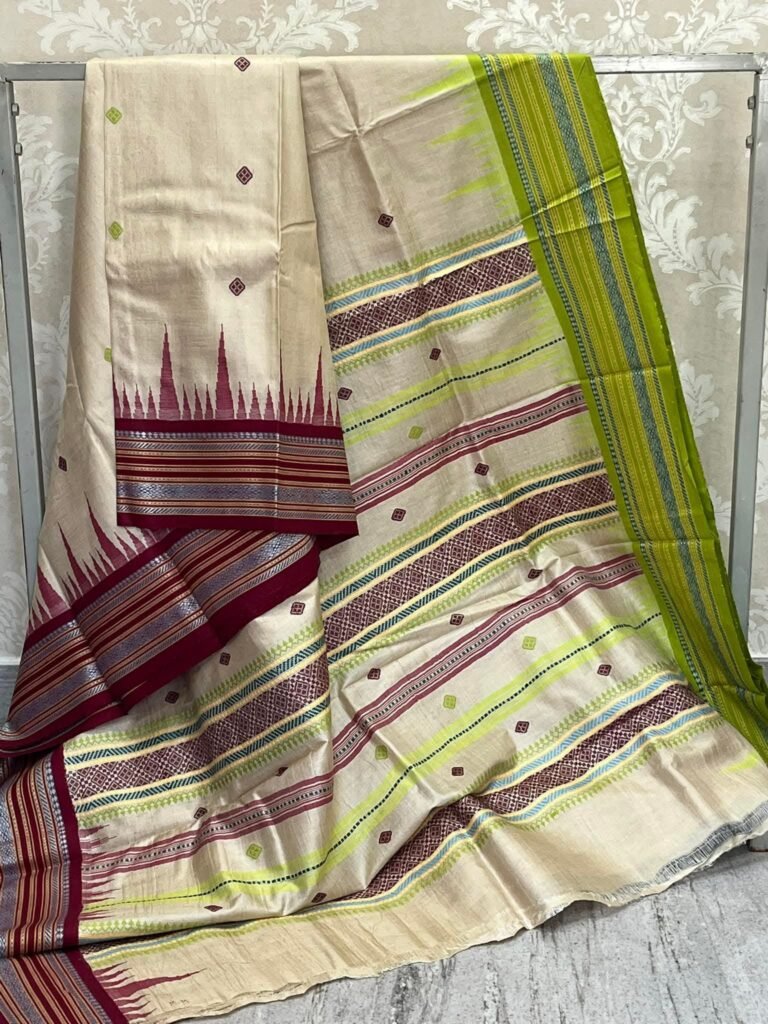
3. Printed Border — The Garden in Silk
Floral prints meander softly along the pallu — an echo of wildflowers and forest trails. Light as air, smooth as song, this tussar is elegance for those who love understated art.
Mood: Dreamy | Artistic | Everyday elegance
4. Karvati Jala Pallu — The Story in the Weave
The jala pallu is where Vidarbha’s legacy breathes. Geometric borders and fine net-like detailing speak of mastery passed down generations. Every fold catches light like memory — old, precious, and alive. The Karvati Jala Pallu is the hallmark — a tapestry-like weave with temple motifs, rudraksha patterns, or floral vines, depending on the region and artisan.
Mood: Classic | Heritage | Statement of strength
The Feel and the Flow
Draping a Vidarbha Tussar is like wrapping yourself in sunlight filtered through trees — soft, warm, and organic. The silk breathes. It moves with you, not against you.
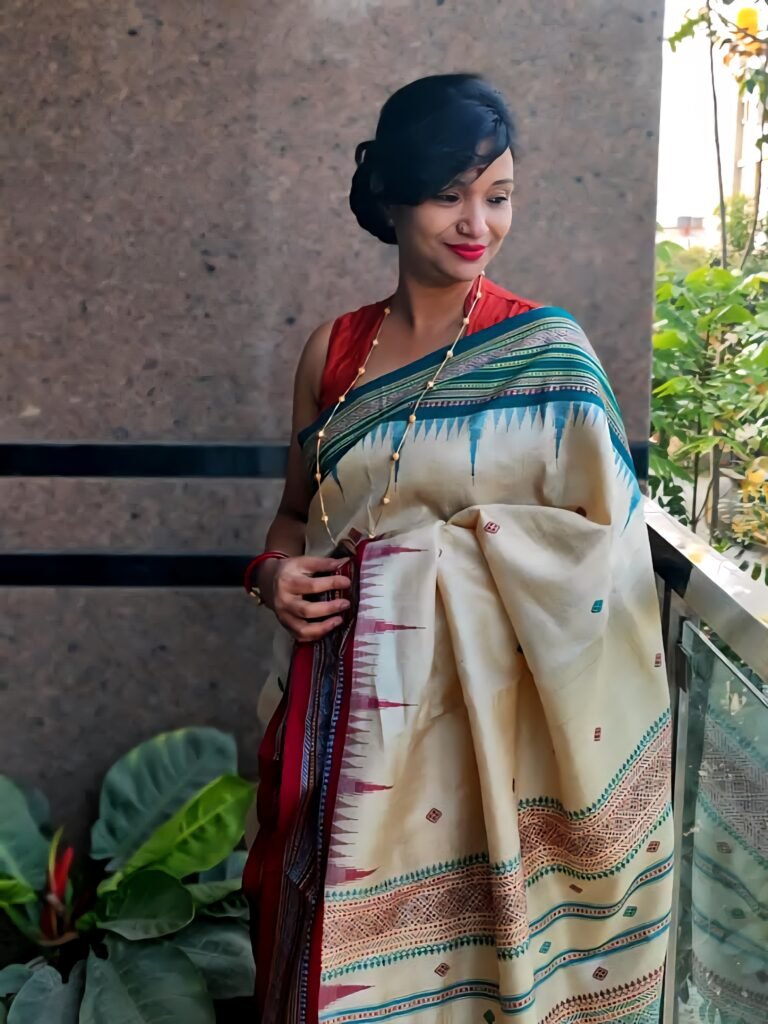
Unlike polished silks, it carries an earthy matte glow — elegant, not flashy; confident, not loud. The saree has the sheen of silk and the comfort of cotton — a perfect balance between luxury and livability.
You can feel its handspun unevenness, its subtle rustle, its firm yet fluid drape — every inch reminding you that no machine could ever recreate this touch.
The Craft & the Culture
Vidarbha’s Tussar weaving is a story of women and looms — families where generations have grown up to the sound of warp and weft. Many weavers cultivate the tussar cocoons themselves, reeling silk that’s native and sustainable.
The saree represents Maharashtra’s connection to nature and tradition, with motifs inspired by temple architecture, sacred flora, and the geometric symmetry found in tribal art.
It’s the saree that farmers’ wives wore for weddings, and urban connoisseurs now choose for art exhibitions, festive mornings, and heritage gatherings.
Why It Matters Today
In a world of fast fashion, the Vidarbha Tussar stands tall — slow, soulful, and sustainable.
It supports hundreds of weaving families and preserves a regional craft that blends artistry with eco-consciousness.
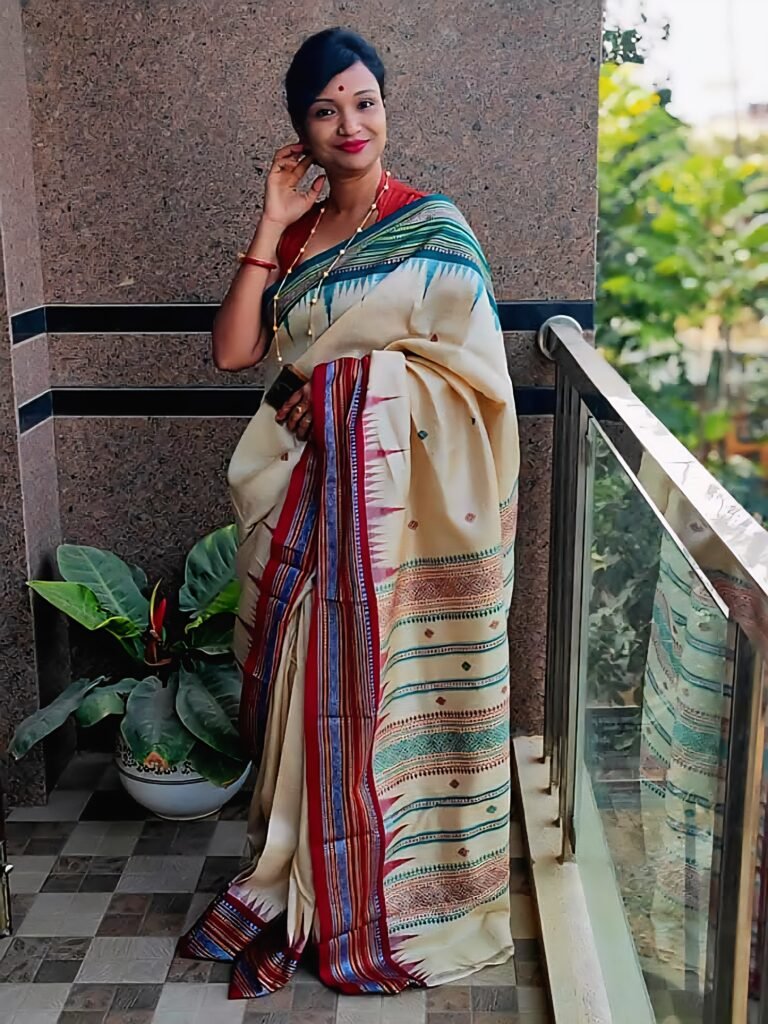
Its versatility makes it an all-weather wonder — perfect for tropical summers and cozy winters. It’s as comfortable in a boardroom as it is at a festive puja.
Styling the Vidarbha Tussar
- Pair it with oxidized silver or traditional Kolhapuri saaj jewelry.
- Go fusion with a linen or embroidered blouse for a modern twist.
- Perfect for subtle festive wear —Diwali brunch, Ganesh Chaturthi, or even a gallery opening.
- Drape it the traditional seedha pallu style for an authentic Maharashtrian look, or let it flow free for a contemporary touch.
Why We Love It
Because it’s not just a saree — it carries the scent of raw silk, the sound of the shuttle, and the warmth of tradition. It’s Maharashtra’s quiet poem, written in the golden language of Resham (silk).
It’s for the woman who loves roots as much as refinement, comfort as much as craft. When you drape a Tussar from Vidarbha, you don’t just wear silk — you carry patience, precision, and poetry in every fold.
So, until next time, celebrate the resham (thread) that ties us to our roots — one saree, one story, one six-yard saga at a time. 💛
N.B – You can buy Vidarbha Tussars from www.vedasaga.com, or call them on 9886262255

By Deepa Perumal
Deepa Perumal is a Management professional, and a passionate advocate for women’s empowerment. As a career mentor, entrepreneur, and multilingual author, she shares her insights through blogging and writing features on history, world cultures, travelogues and memoirs. Contact her at deepabperumal@gmail.com





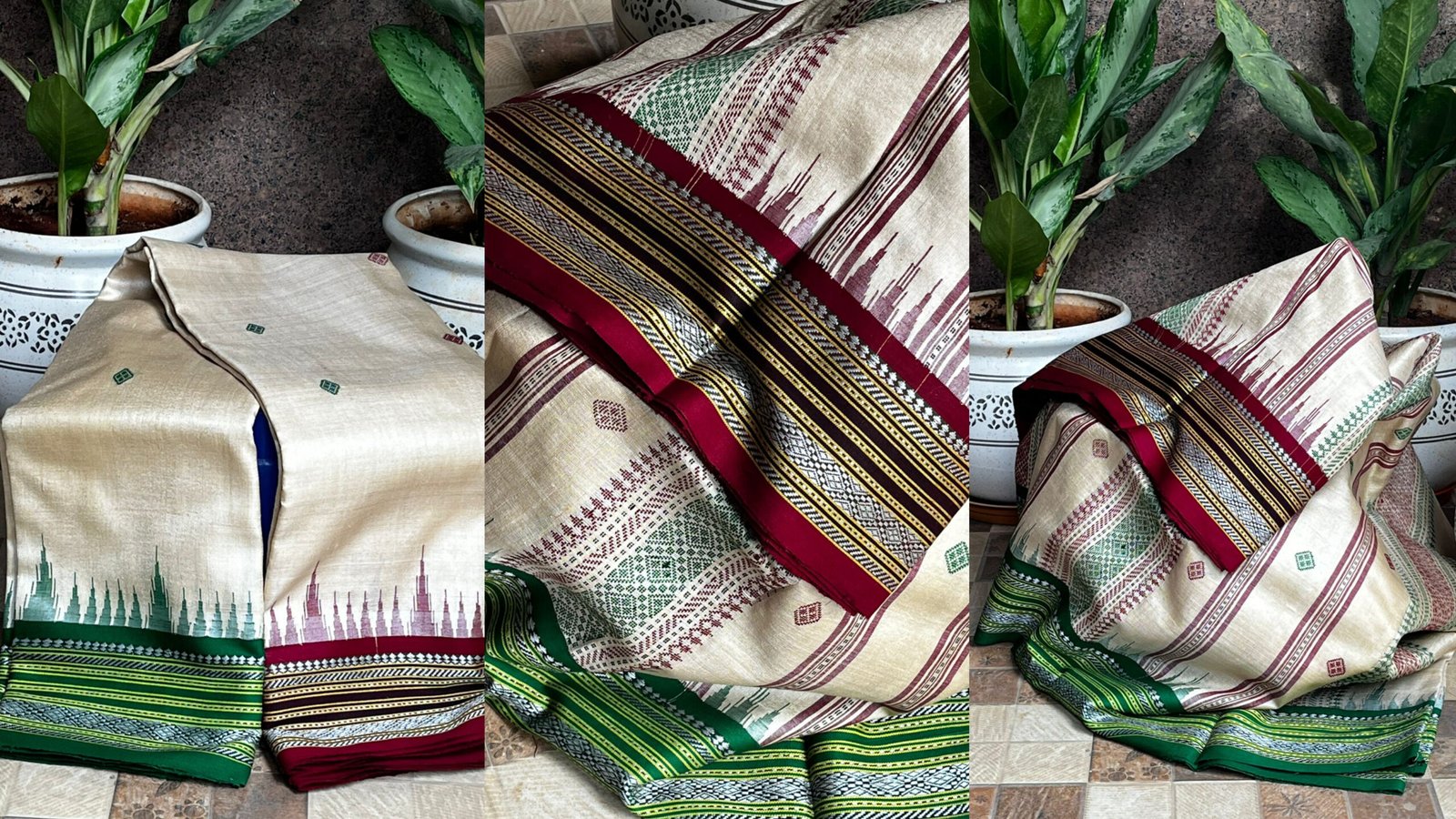








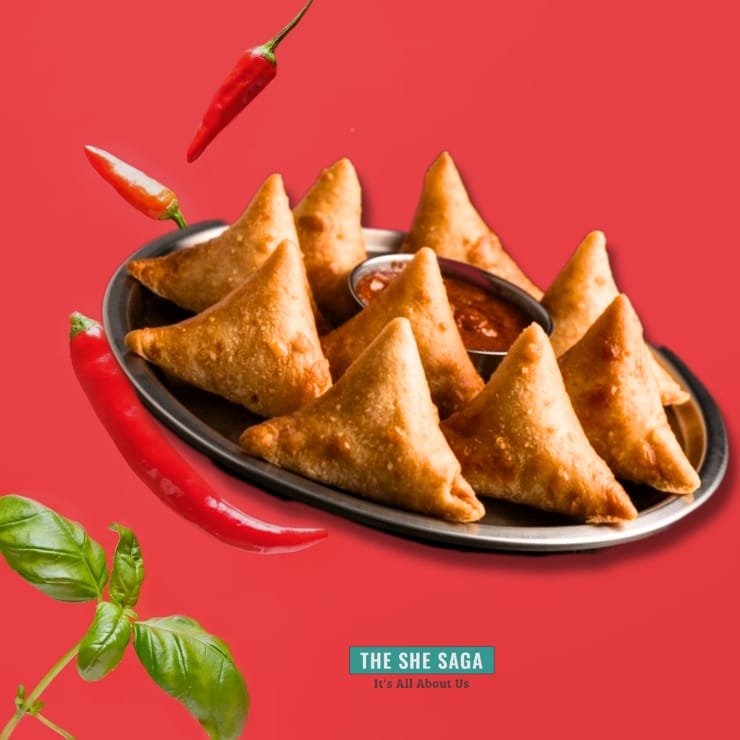
One Response
So besutifully penned. Well researched and your words helped me visualize the type of sarees. Every word gave me an insight regarding these lovely silk sarees.